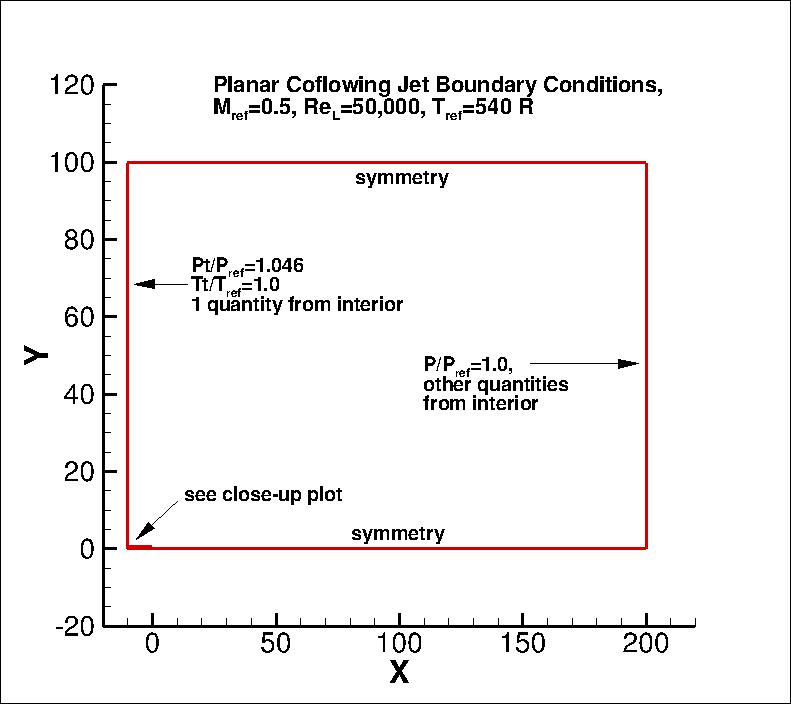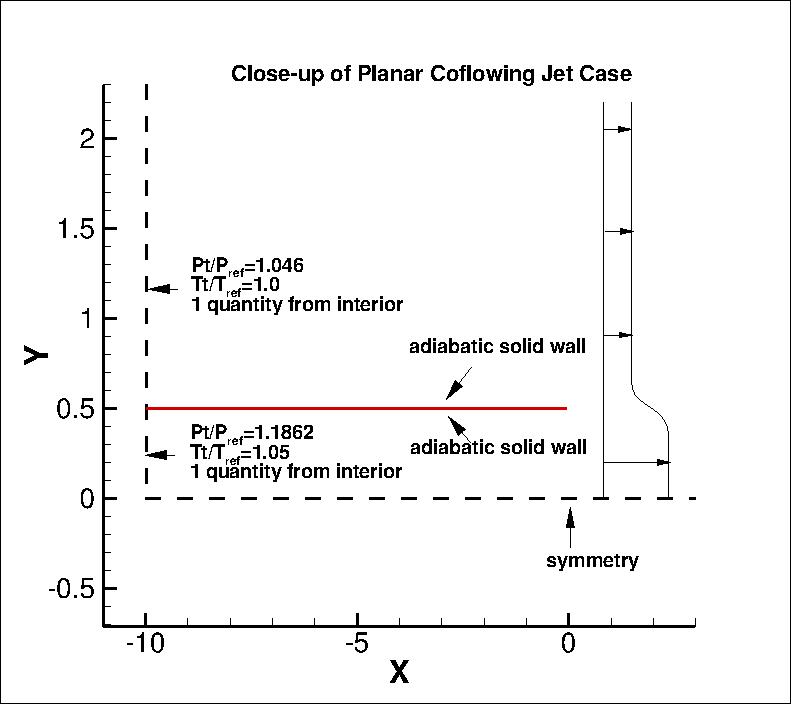 |
Langley Research CenterTurbulence Modeling Resource |
Return to: Turbulence Modeling Resource Home Page
VERIF/2DCJ: 2D Coflowing Jet Verification Case - Intro Page
The purpose here is to provide a large sequence of nested grids
of the same family,
along with results from existing CFD codes that employ specific forms of particular turbulence
models, in order to help programmers verify their implementations of these same models.
On a given grid, there may be differences between the results from different codes, but presumably
as the grid is refined the results should approach the same answer (if the flow conditions and
boundary conditions are the same).
With verification, the purpose is not to establish the "goodness" of a model compared to experiment,
but rather to establish that a model has been implemented correctly, as intended according to the
equations and boundary conditions. (It is through validation that a model's "goodness" is
established.) The purpose here is primarily verification.
The coflowing jet case focuses on the development of a free jet
emanating from between two thin plates (there is only one plate in the grid, but a symmetry BC is employed at
the bottom boundary at the center of the jet).
The smaller inner stream has Mach number near M=0.5,
whereas the outer larger stream has a Mach number near M=0.25.
The Reynolds number is Re = 50,000 based on
length "1" of the grid.
The computational domain extends from -10 < x < 200, and
0 < y < 100. The separating plate extends from
-10 < x < 0 at y=0.5. In terms of the plate, the reference length is 10 units.
Both the lower and upper boundaries are taken to be symmetry planes.
The following plots show the layout of this case,
along with the boundary conditions.
"Pt" refers to total pressure, "P" refers to
static pressure, and "Tt" refers to total temperature.
(Note that particular variations of the BCs at the inflow, top wall, and outflow
may also work and yield similar results for this problem.)
Note that this is a compressible flow verification case.
Therefore, if you run this case with an incompressible code, your results may be close - but
not quite the same - as the grid is refined.
Also note that this case was previously referred to as a 2D Planar Shear, but it is
more appropriately referred to as a 2D Coflowing Jet. Some of the figures associated with this
case may still have the word "shear" in them.
What to Expect:
(Other turbulence model results may be added in the future.)
Return to: Turbulence Modeling Resource Home Page
Recent significant updates: Responsible NASA Official:
Ethan Vogel


RESULTS
LINK TO EQUATIONS
MRR Level
SA
SA eqns
4
SST-Vm
SST-Vm eqns
3
SSG/LRR-RSM-w2012
SSG/LRR-RSM-w2012 eqns
3
Wilcox2006-klim-m
Wilcox2006-klim-m eqns
2
K-kL-MEAH2015m
K-kL-MEAH2015m eqns
2
08/28/2020 - changed SST-V naming to SST-Vm
04/05/2016 - re-named the case 2D Coflowing Jet
Page Curator:
Clark Pederson
Last Updated: 03/24/2021